My squares, Grey? Well…… they’re square. The clue is in the name. Squares are square, right?
Ah, but they don’t have to be.
When it comes to Fourth Edition D&D, those battlemats, dungeon tiles or whatever else you use are marked off in some subtle or unsubtle manner with one inch squares. That’s the general assumption behind miniatures play in the game. You don’t have to use miniatures at all in the game – in fact, the more we play 4e, the less we’re using them, preferring good old fashioned imaginative gaming. But if you do, it might be worth thinking about the shape of those squares.
Look. I’ll show you.
Here’s your typical battlemat grid with a lone Fighter in the middle. This grid, and all others, are created with the wonderful imcompetech graph paper generator and tokens from the Gametable project.
This is the norm (hello, Norm). Our Fighter can be attacked from eight directions but the guys in the corners feel squeezed out of the action. This doesn’t makes sense as, depending on era, many close combats were more accurately fought on the diagonal than face-to-face. Fighters didn’t face each other head-on, but rather attacked from the front-and-side. That’s why shields (which defend the side being attacked) were such a bloody good idea. Also, squares make your area effect spells also square, which is just silly. It’s a FireBALL, not a FireCUBE!
So how about we turn the squares into hexagons instead?
Ooo! Wargamey! There’s a reason why so many wargames favour the hex grid, and that’s because it rocks. Each direction is given equal weight so the guys fighting in the corners don’t feel sidelined any more, and diagonals are no longer the poor cousin as the movement choices. Remember that in Fourth Edition your heroes can move in any direction (even diagonally) without penalty, unlike in Third Edition with its kludgy diagonals costs one-and-a-half squares pythagorean bastardry.
Give players a hex grid to play with, and their movement options come alive.
It’s also a far more visual grid style when it comes to spells and area attacks. A spell such as Burning Hands with a range of Close Blast 5 covers a satisfying number of squares hexes and actually looks the part too. Bye bye, spells with 90 degree corners.
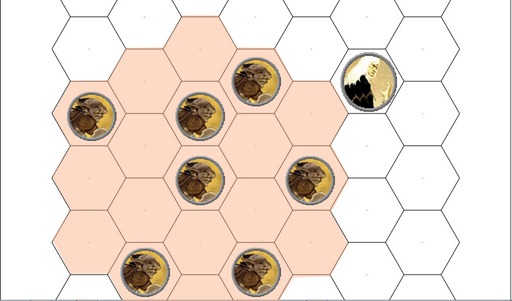 Close Blast 5, Hexagon style. Crunchy fried Goblin, anyone?
Close Blast 5, Hexagon style. Crunchy fried Goblin, anyone?
For the graph paper above I set the generator to add a little dot in the centre of each hex. This makes it easy to measure distances and line up dungeons walls, etc. Generate your own, print it on acetate and you’ve got a homemade overlay to be proud of.
Seriously, change your squares to hexes and you’ll never look back. It’s easily the best shape if you want to bring out the best in tactical combat and spellcasting.
But…. what if you don’t? What if you want a low-magic, close combat oriented game that simulates the flashing rapiers of the Renaissance era? In that case, hexes are too wargamey and it’s better to choose a more intimate layout. Something like this, perhaps.
A Diamond (trapezoid) grid really does emphasize close combat fought with flashing blades. Foes face off at an angle to each other and can only be honourably surrounded by at most four opponents. While movements can be along the edges or corners, combat is usually fought edge-to-edge. Only a knave would attack from the side, back or head-on! Optionally, grant grant Flanking (and therefore Combat Advantage) if the number of foes exceed your level. A 2nd level hero might be able to take on two ruffians with halfswords, whereas a 6th level hero take take on up to six without breaking sweat!
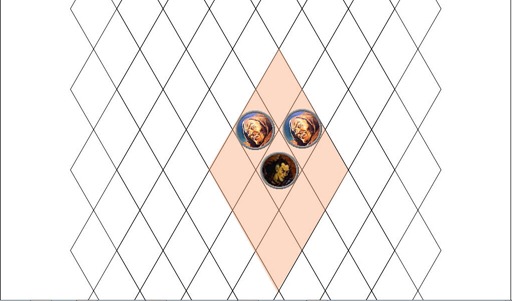 Two Ruffians facing off against Pierre d’Gascon, 1st level Elven Bard. They’ve got Combat Advantage, but he knows crude jokes about dwarves!
Two Ruffians facing off against Pierre d’Gascon, 1st level Elven Bard. They’ve got Combat Advantage, but he knows crude jokes about dwarves!
This isn’t the battlemat shape for Conan against the hordes or Wizard lobbing Fireballs (use the hex grid for that), but it is particularly well suited to the likes of d’Artagnan, Zorro or any Wizard who favours subtle over loud and noisy.
Wait? You mean the shape of the grid has a bearing on the style of campaign?
Yep. Totally. Experiment with your battlemat design and you can influence the mood of the campaign, session or encounter. Go wild. Make it a spiral and have the heroes falling down a gigantic helter-skelter pursued by Rabbid Raving Gnomes. Use circles and the heroes are floating in bubbles upon the ethereal winds (be careful not to pop yours or you will fall forever!). Use range bands in the style of 3:16 and Traveller to simplify combat and make it just a little more abstract. More on that another time though.
Keeping it square is just….. square.
Here’s the last grid to consider. Well, when I say grid.
Bye bye battlemat! Grab a ruler for your measurements and your heroes are completely free to roam the battlefield. Without that pesky Third Edition diagonal rules silliness there’s no real reason to use a grid at all in Fourth Edition. Flanking becomes a GM’s decision (not a bad thing, imho), and the heroes are open to explore the dungeon freely, just as nature intended.
The only disadvantage to eliminating the grid is that you need well motivated players to pull it off. Less confident gamers tend to hover like little lost sheep, unsure of where to go on a wide open space. Bless.
What is gives you in return is complete freedom. Game on the floor. Build a mega-dungeon out of LEGO and cardboard boxes. If you don’t need a grid under everything (and you don’t!) then you are no longer limited by the shape of a sheet of paper or your dungeon tiles. Get a whiteboard pad and some markers. There’s your dungeon, right there. Add minis (counters, jelly babies, whatever) and you’ve got a gridless game to be proud of.
I’ll say it again. Squares don’t have to be square. Heck, they don’t even need to exist at all.
Think about it.

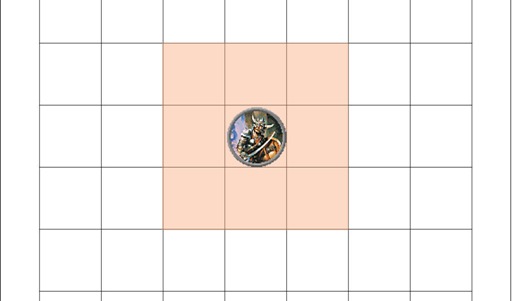
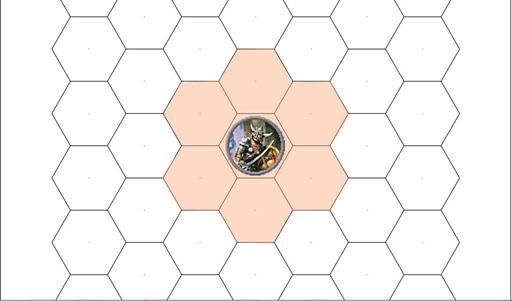
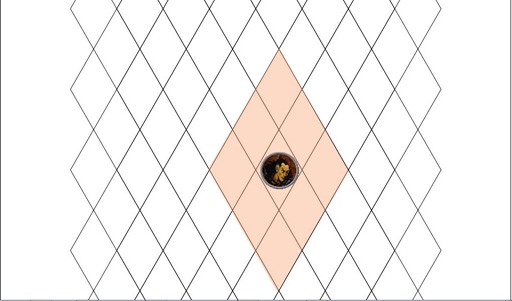
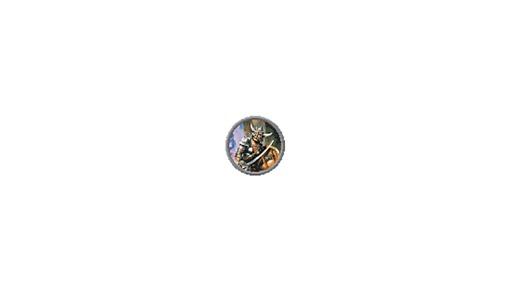



Nice post. I think it bears repeating that folks can play 4E pretty fast and fluid without a grid and still get most of the combat mechanics down, especially with the last option. Use a few cardboard templates (3 X 3 squares) and range sticks (use a pencil at 5″ and 6″) if you have to keep things precise.
Agreed. One of my players has a set of card templates for Blast 3, Blast 5, etc that he uses all the time. With those and a ruler you don’t need a grid at all. Makes for a much more dynamic and fluid game.
Yet another good post from Greywulf.
Another type of grid that is definitely worth mentioning is offset squares. They are functionally equivalent to hexes, have the same more realistic feel that you get from hexes rather than squares. Moreover, the thing that offset squares has over hexes is that it fits better with areas that have a lot right angles, which comes up a lot.
Here’s something to think about though: with both hexes and offset squares, how does three dimensional movement work?
Good question!
3D movement brings a whole new dimension (well, duh!) to the game whatever grid style you choose. Even something as simple as sloping floors (+1 square to any movement down the slope, -1 square up it, including Shifts, Pulls and Pushes) can completely alter the tactics in combat.
One to file for another blogpost to cover fully, methinks :D
I think he was referring to flying opponents. For hexes, I the cubic unit should be a hexagonal prism. That’s easy to visualize and makes it analagous to the cubes of normal issues.
Another variation of hexes is a triangular grid. You can see this at incompetech.com/graphpaper/triangle/. It works like hexes, except that you choose any set of six triangles around a point as your hex. It allows a slightly finer set of movement options.
Euclid was boring…
I play without a grid all the time.
In fact, I play without miniatures.